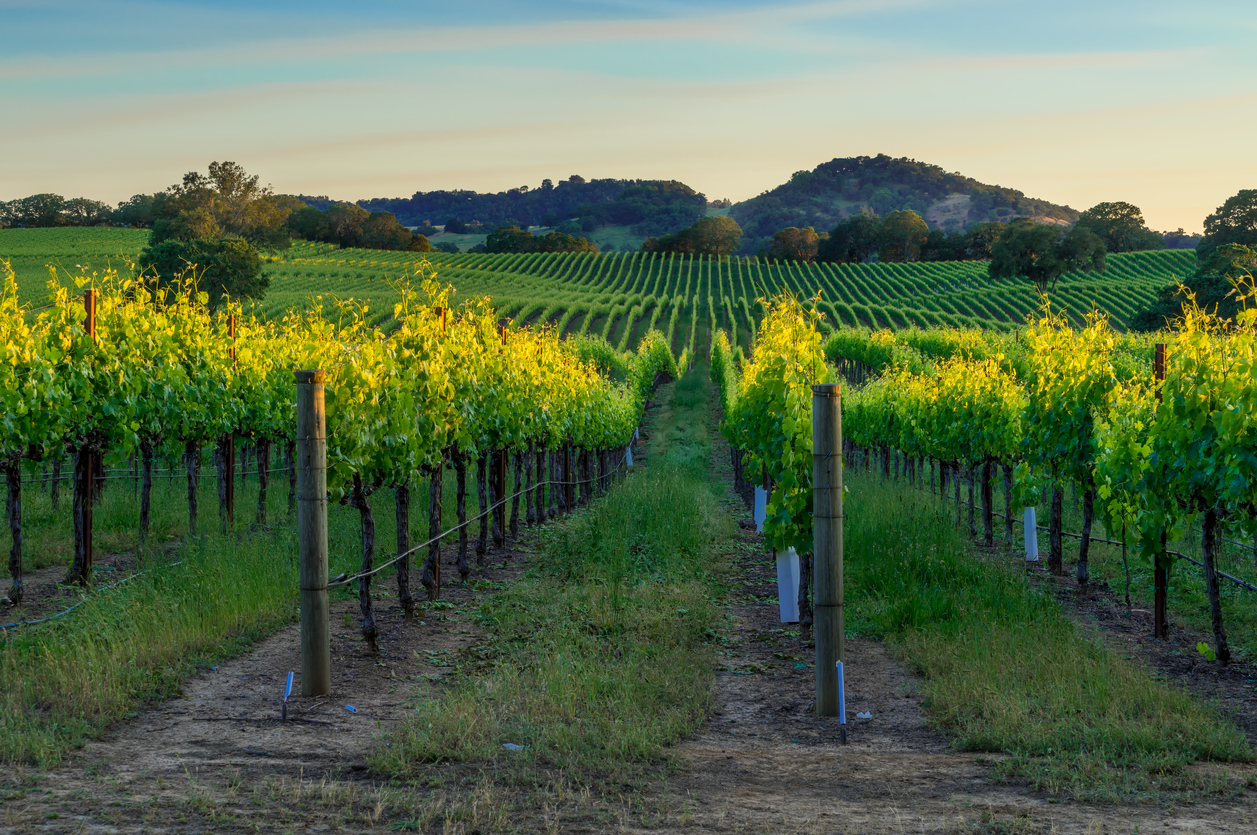Since August 15, over 1.6 million acres in California have burned — an area about the size of Delaware. Scientists predict this year will likely mark the state's worst-ever wildfire season.
In a normal year, the end of summer would mark the beginning of harvest in wine country. Nearly 15 million tourists visit Sonoma and Napa counties annually — pumping about $4 billion into wineries, hotels, and restaurants, according to state tourism data.
"Right now is the most critical time for the industry and our business and our county," Ross Reedy, the director of winemaking for Truett-Hurst Inc., said.
Reedy has worked in the wine industry for 12 years. He's seen how fires have changed the landscape over the years. He said that 10 years ago, he'd be able to determine when to pick grapes based on their ripeness, now he's at the mercy of fires and wind patterns.
Even when fires aren't close, winemakers worry about what they call "smoke taint."
"If you have smoke that sits in a vineyard over a period of time, it latches onto the skins and the sugar," Reedy said. "It actually creates very heavy barbecue, ashtray kind of characteristics in the wine."
"You can taste it as an ordinary consumer," Mia Van de Water, a master sommelier at Cote Korean Steakhouse in New York, said.
She said the ashy taste sometimes becomes apparent only after the grapes have been processed and fermented. Batches of affected wine are typically sold in bulk and blended in with other wine to dilute the flavor.
"It'll wind up in something like Woodbridge by Robert Mondavi," she said, referring to a product that costs under $10 per bottle.
Some vineyards are just one lost crop away from their business coming to an end.
"First of all, it hurts the grower," Reedy said. "So basically he doesn't make any money this year. He limps along. If he was in dire straits, it could potentially kill his business."
Hotter, drier conditions are becoming part of a "new normal" in California. Though last year's Kincade Fire started because of faulty electrical equipment, this year's combination of a searing heat wave and rare summer lightning storms has kicked off what scientists predict could be a catastrophic fire season.
Winemakers are trying their best to adapt, but there are many complications.
The power at Emmitt-Scorsone Wines was out for over a week.
Some vineyards have crop insurance, but it rarely covers all losses. That puts growers like Reedy in a bind: harvest what they can and risk that the wine made from them will have an unpleasant smoke flavor, or let them rot on the vine and file an insurance claim.
And it means asking field workers to brave rough conditions in the middle of a pandemic. A July study showed that California agricultural workers were three times more likely to contract the virus compared with workers in other sectors.
Corazón Healdsburg, a local nonprofit, has been distributing food since the pandemic began. On August 21, it offered free COVID-19 testing for the community in the parking lot adjacent to its headquarters. Many of those who show up for testing are agricultural workers and their families.
"If somebody is infected with COVID, that could really have a huge impact on the whole operation. And so that's why this testing is so important right now," Ariel Kelley, the CEO of the organization, said.
A majority of agriculture workers in Sonoma County are Spanish speakers. That language barrier can make it difficult to pass on information about COVID-19 and fire evacuations. Some of those who need help most are afraid to ask because of their immigration status, Kelley said.
"There will be folks by virtue of all of the alphabet soup of government agencies that show up: the California Office of Emergency Services and all of the different government departments that come. People get nervous and rightfully so," Kelley said.
Despite these challenges, winemakers are taking steps to protect their workers and their grapes. Organizations like Sonoma County Winegrowers provide fire-safety training. Others have produced instructional videos about COVID-19 for Spanish-speaking workers.
In St. Helena, California, ETS Laboratories developed a test to detect smoke taint in grapes. This year they've already received 1,000 samples for testing, according to Karissa Kruse, the president of Sonoma County Winegrowers. Kruse also oversees a foundation that provides emergency relief to agricultural workers affected by fires.
But many growers, like Palmer Emmitt of Emmitt-Scorsone Wines, remain optimistic about the industry's future.
"Hopefully this is not going to be an annual occurrence. But Sonoma County and the wine industry are resilient, and I think we'll survive and keep chugging," Emmitt said.
In the wee hours of August 23, Reedy's crew finished their emergency pick. It seems that the day's haul has a future in bottles as rosé.
"We would have loved to have turned this into a still red wine, but you gotta do what you gotta do," Reedy said.













